April 2016 In The Garden (Page Two)
We head to the West side of the property and then to the front yard for a quite visit. We used the West side to plant several "miniature" trees. We hope they are miniature!


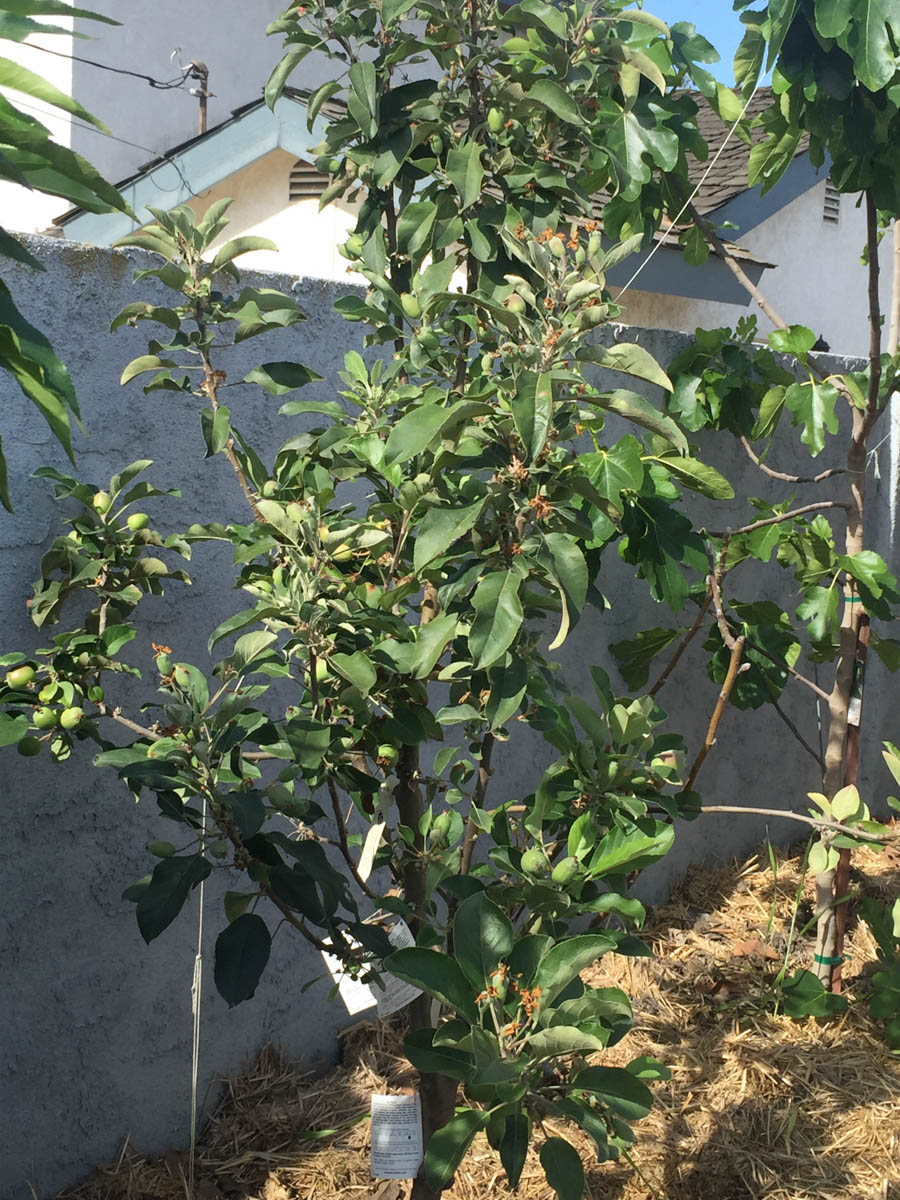
The apple is going wild... It has four different apples on a single trunk so
it will be producing all year long!
Our new apple tree is amazing.... it is so loaded with fruit
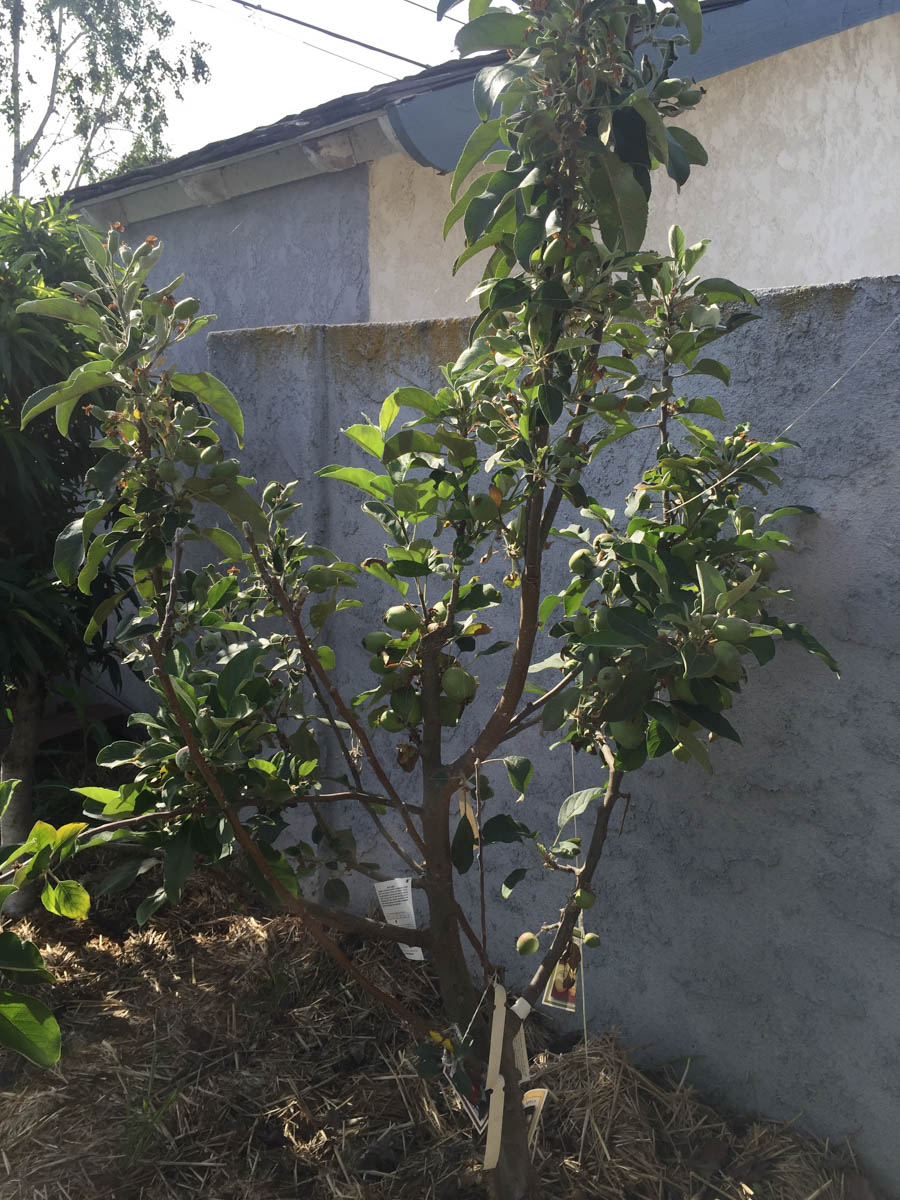
There must be 150 apples on this little guy... We hope some fall off naturally...
The tiny strings are used to guide the limbs where WE want them to go!

Trees everywhere
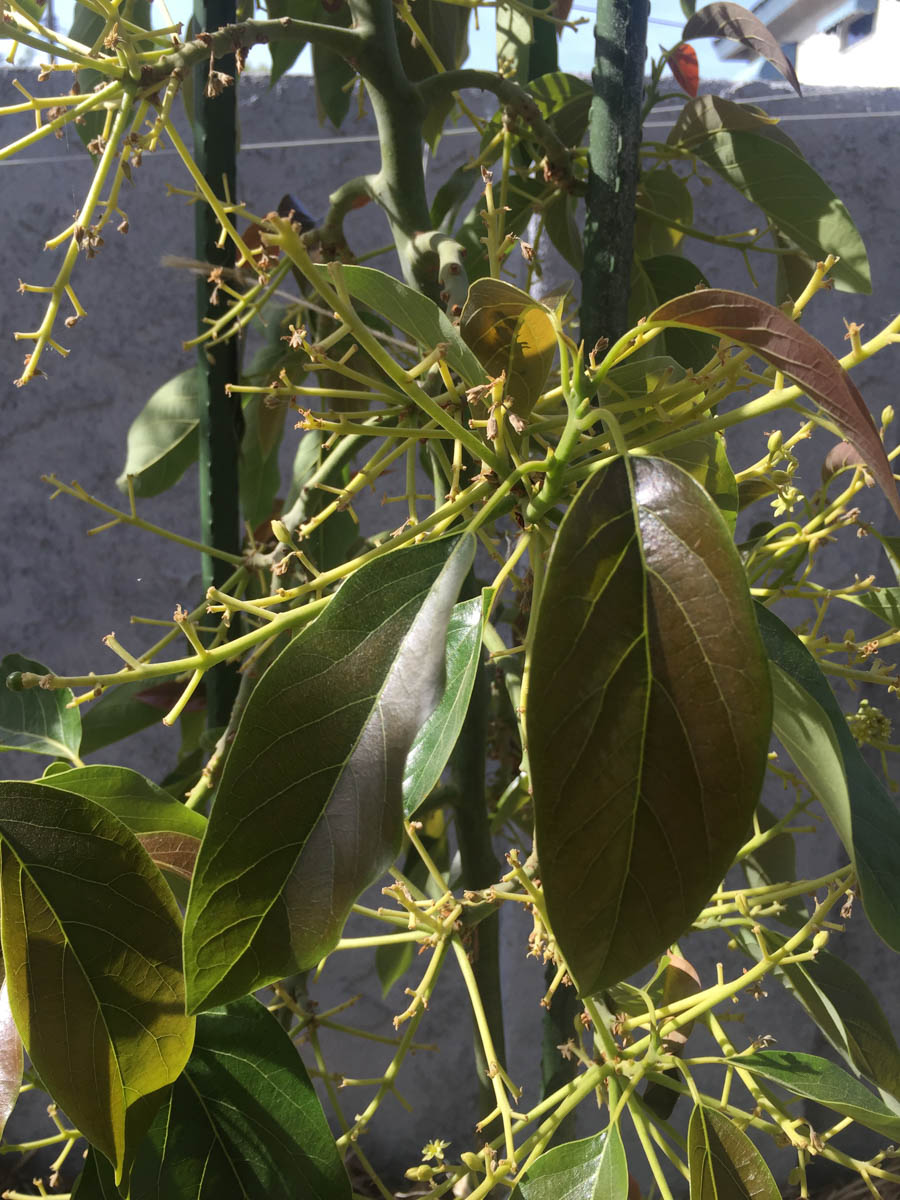
The avocado's are forming
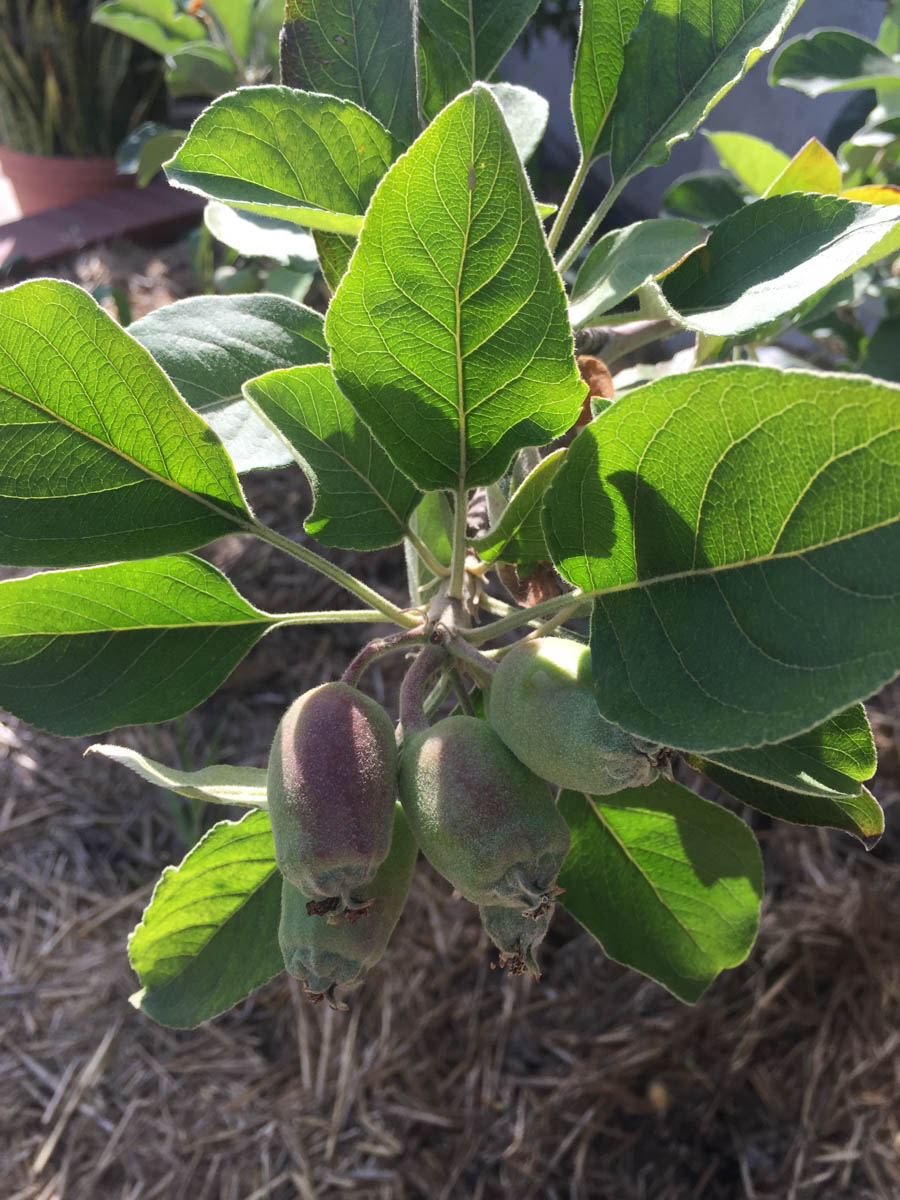
I can already taste the apple sauce

Easy to see!

Training the limbs is essential to keeping the tree small and in our yard
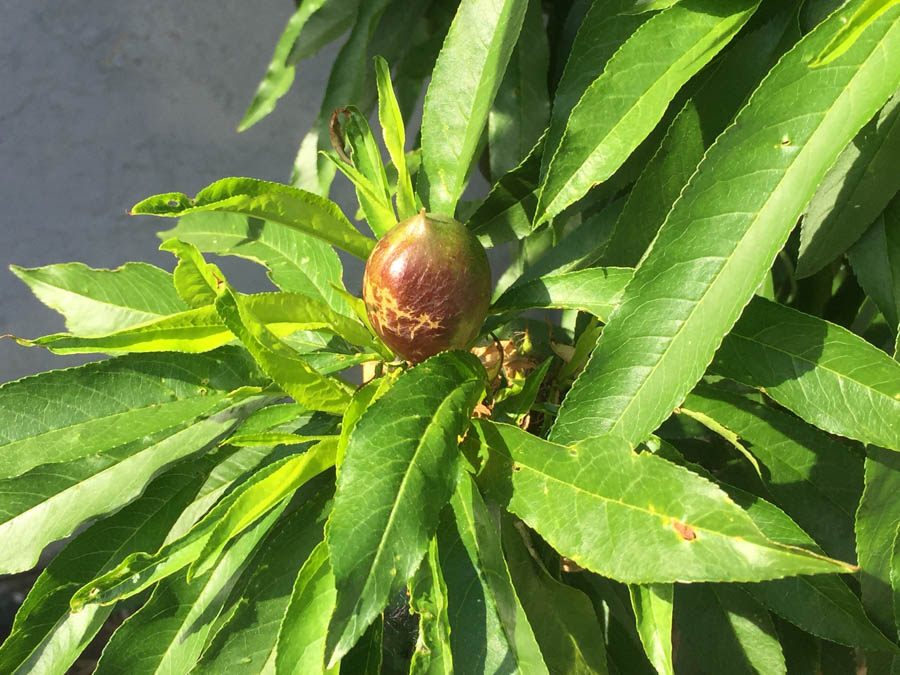
Nectarines anyone?
They are just forming!

The babies are hiding but soon they will be big and have to come out!
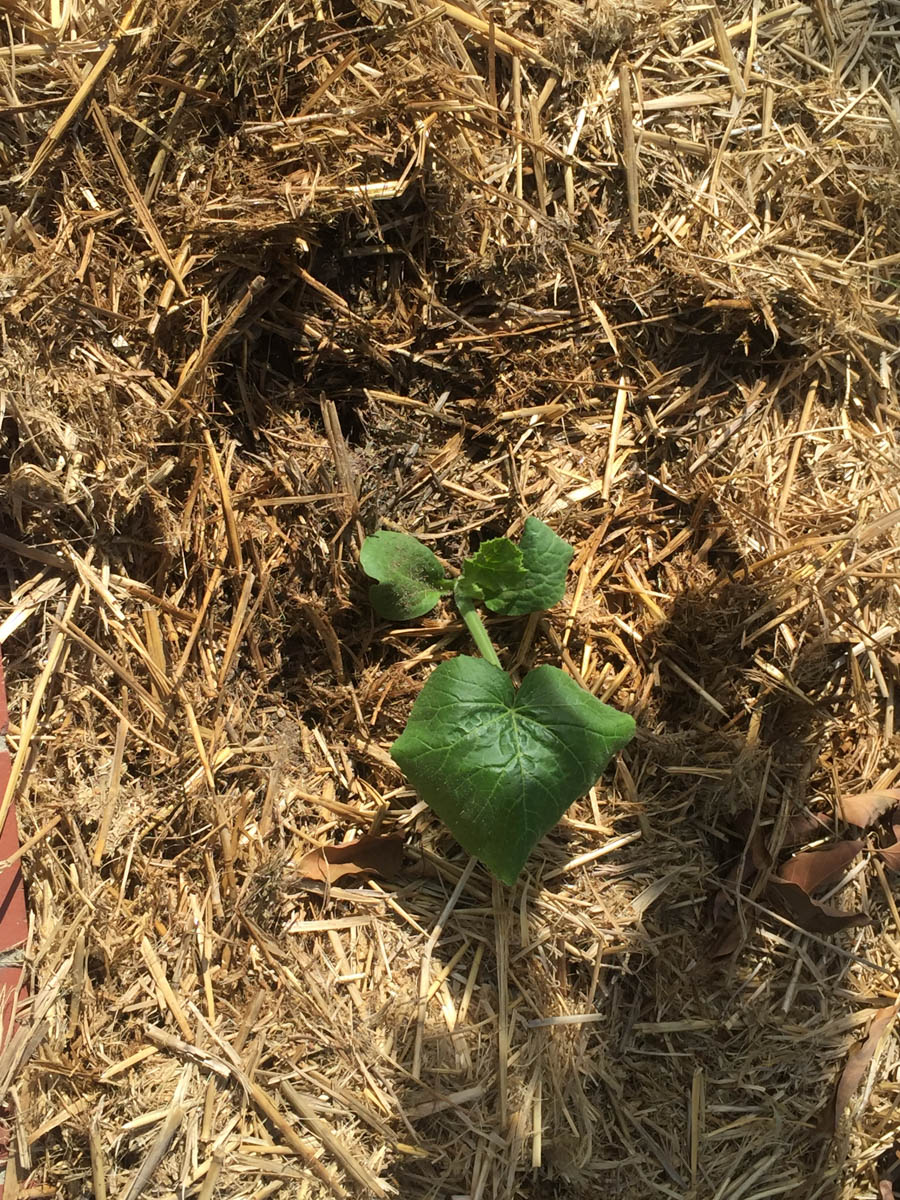
This is a pumpkin which came up from the seeds we threw out last year after
pumpkin carving.... We hope he takes off and grows!
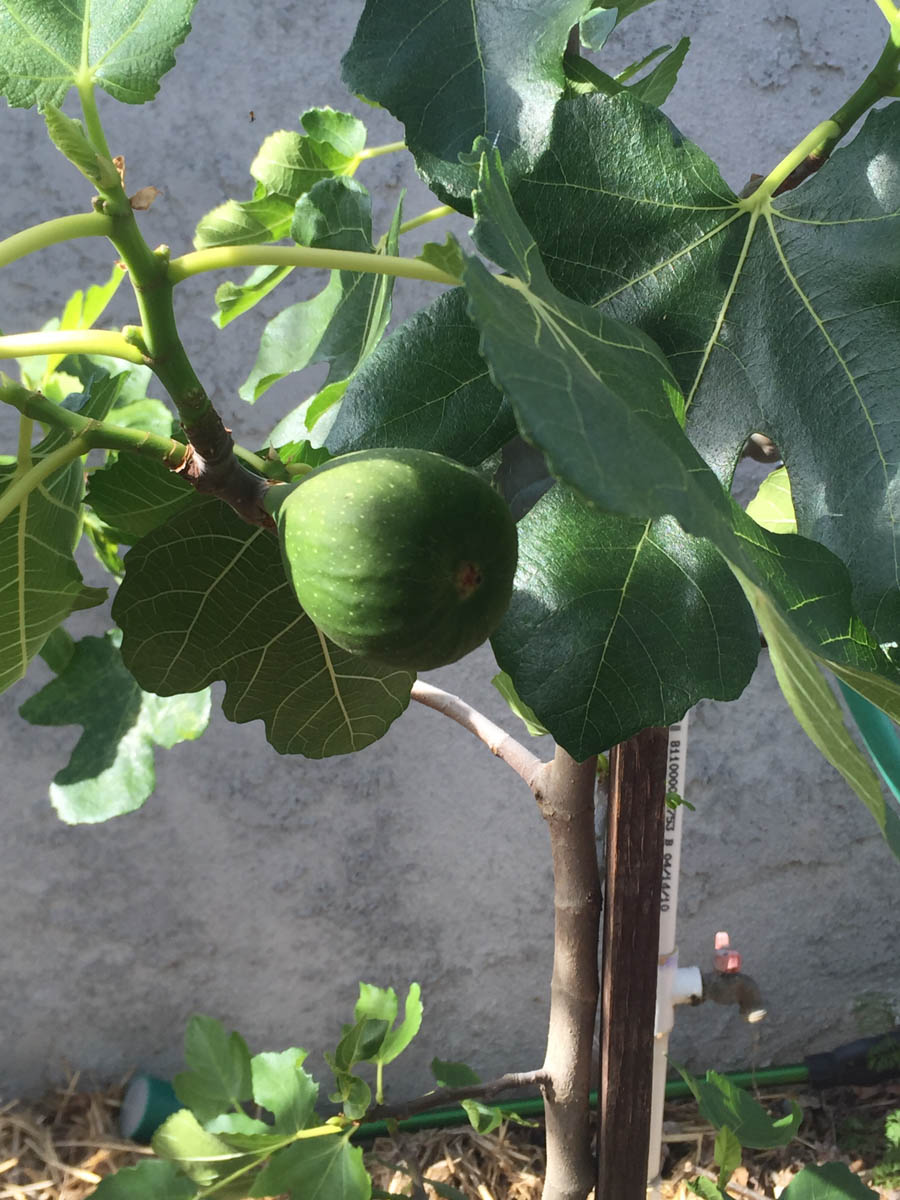
Love those figs
Did You Know? - Captain Bligh is credited with planting the first fig tree in Tasmania in 1792.
In 812 AD, Charlemagne attempted to introduce the fig to the Netherlands, but was unsuccessful because the fruit could not adapt to the cold weather.
In ancient Greece, figs were regarded with such esteem that laws were created forbidding the export of the best quality figs. Sycophant then derives from the Greek word meaning one who informs against another for exporting figs or for stealing the fruit of the sacred fig trees. Hence, the word came to mean a person who tries to win favor with flattery.
Fig trees are of the genus Ficus, in the mulberry family. The rubber plant, a popular house plant, the Bo tree (sacred to Buddhists), and the Banyan tree are also species of Ficus.

The trees are fairly close together so we will be doing a lot of training and trimming
Fig anyone?

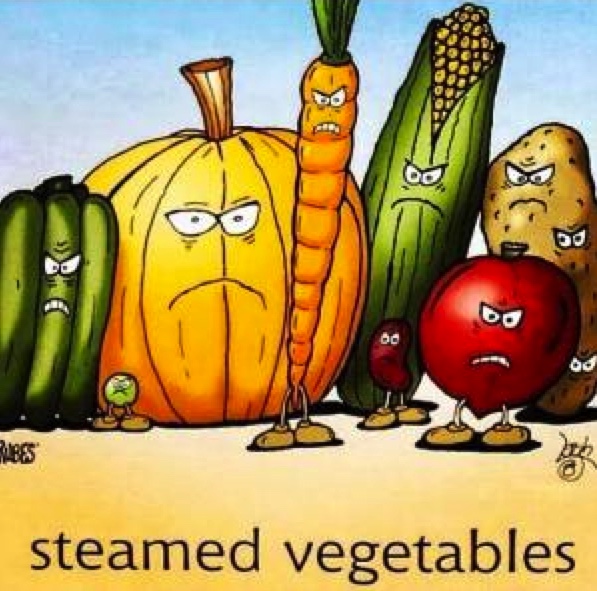

Where there is dirt at our house, there are veggies somewhere!
The string beans are beginning to climb
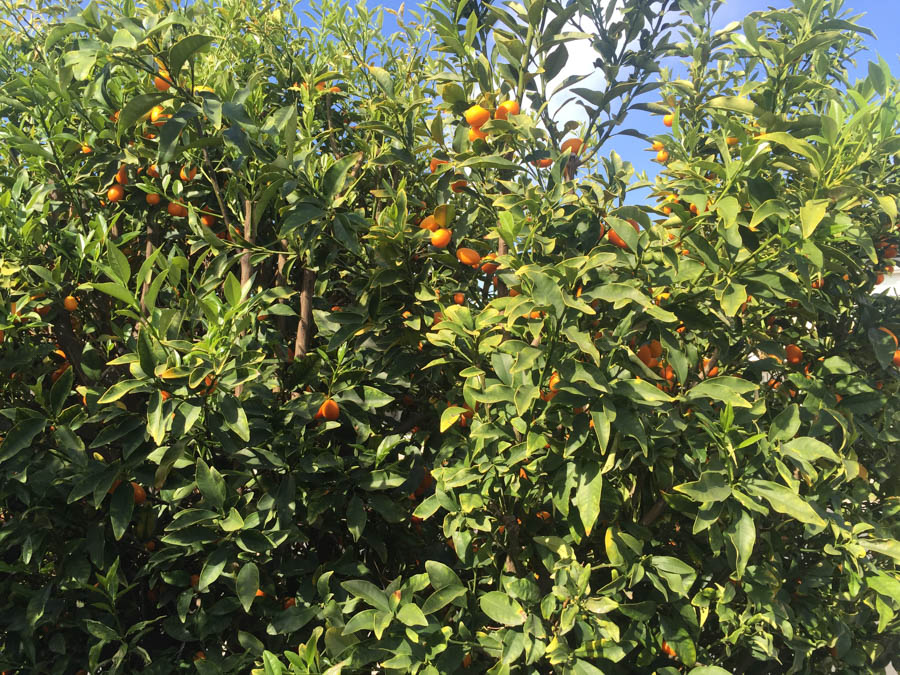
Love those kumquats
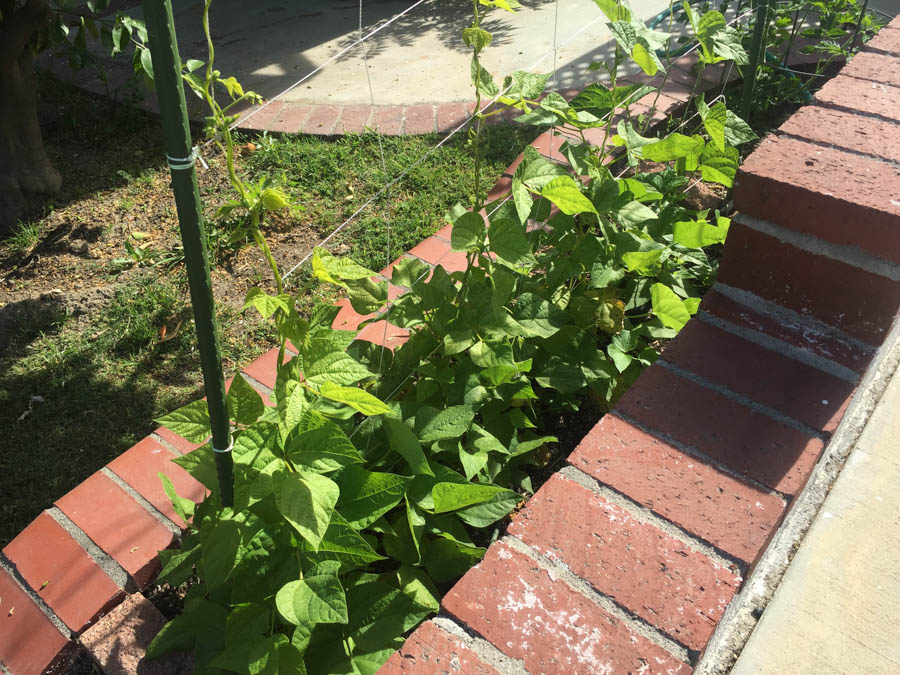
The beans will be 6-7 feet tall in three weeks! They produce many many beans
so we take them to the neighbors or the local food store for the needy
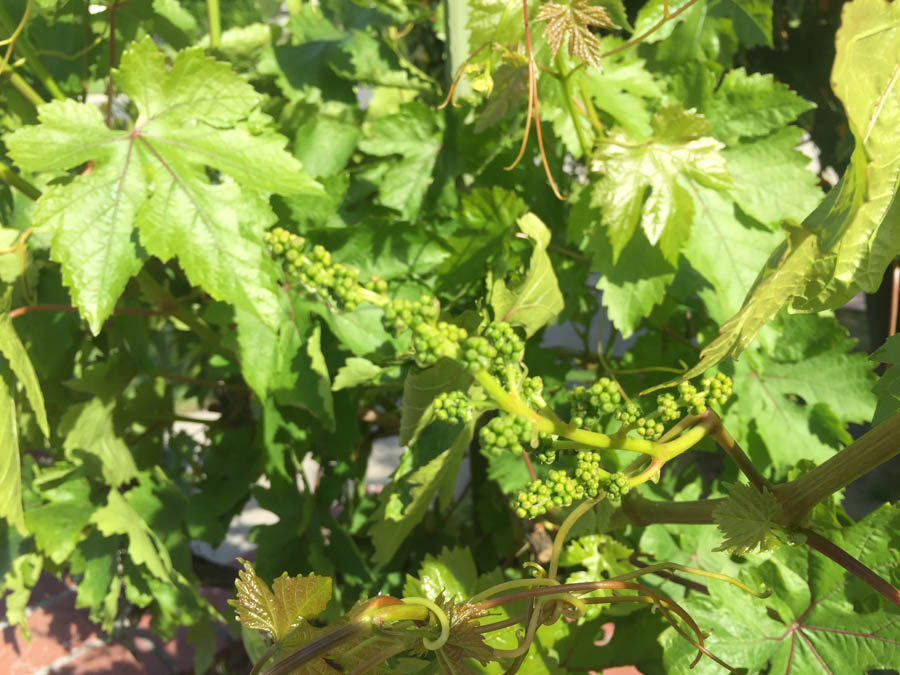
Yes... We have grapes but no wine grapes...

It will be loaded with grapes this year
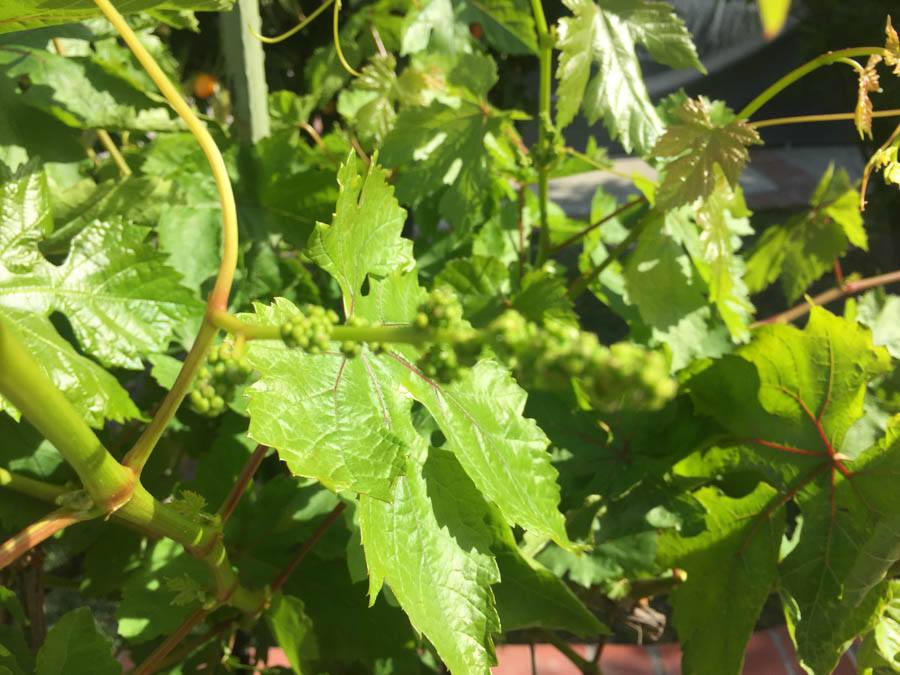
We are going to keep out eyes on them... Being close to the ocean one needs
to watch for "mold" on the grapes.
 |
|
The kumquats are doing well
Did You Know? - The kumquat is a tiny orange/yellow, football-shaped fruit native to Eastern Asia, and closely related to citrus fruits. (Kumquats were originally considered Citrus, but in 1915 were given their own genus, Fortunella). They are unusual in that the edible skin is sweet and the flesh is quite tart, and the combination leaves a pleasant citrus taste in the mouth.
Kumquats are eaten whole, candied, pickled, and used to make relishes, preserves and marmalades.
There are also hybrids produced with limes, oranges and other citrus fruit, known by names such as limequat, orangequat, citrangequat, etc.

Look carefully ... Baby apples everywhere
but the tree is in the parkway
and some people have been know to STRIP the entire harvest...
If they would ask, we would share!
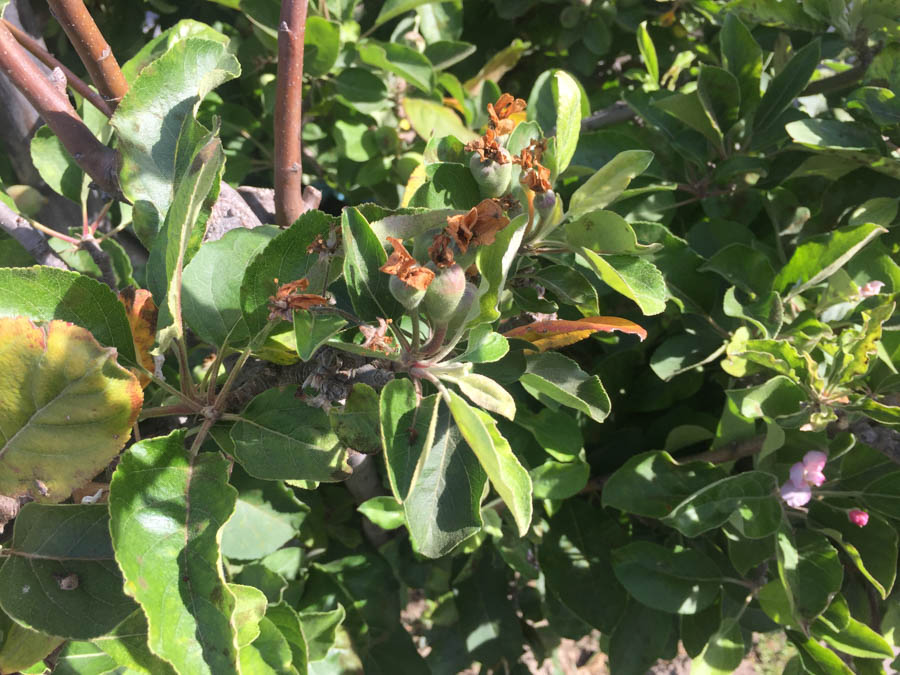
In another month these will keep the doctor away

Up close and personal!
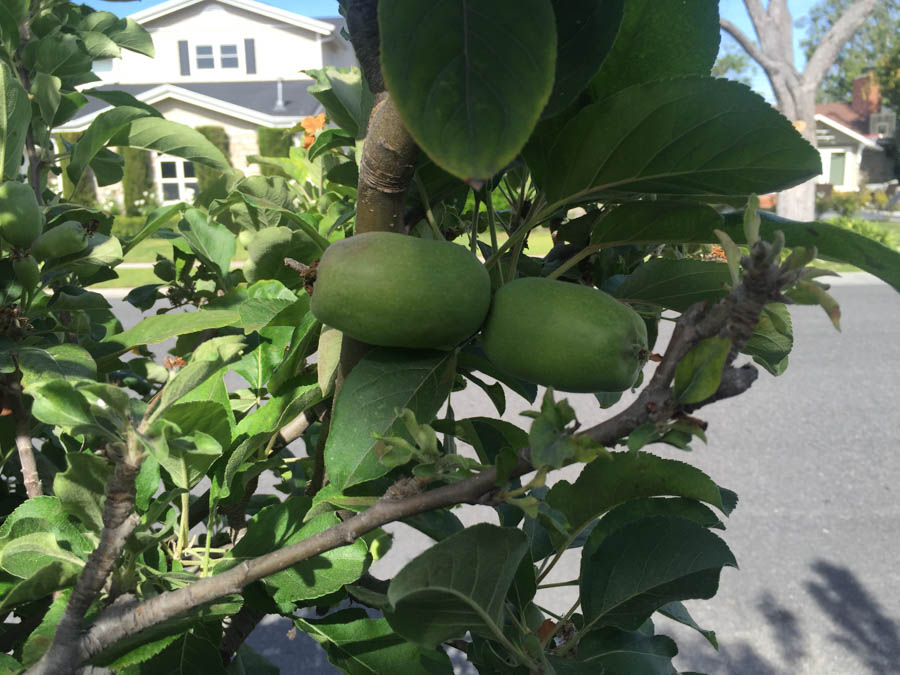
I wanna get big!



Plums are coming on strong... The tree is only two years old!

I am going to grow up and be a big beautiful plum!

Story Time - We had two tomato plants recontenting to be planted so we decided to put them in the front yard on Vicky's side of the property. We asked Vicky to supervise he grandsons in planting the tomatoes so they could see them grow... Well, after being planted, Paul renamed them after the grandsons... One of the apples was really called "Old German"... Interesting, huh?

Vicky's oldest grandson did a great job!

Clark needed a little help!
He did a good job with Grandma help!
 Avocados are in work!
Avocados are in work!
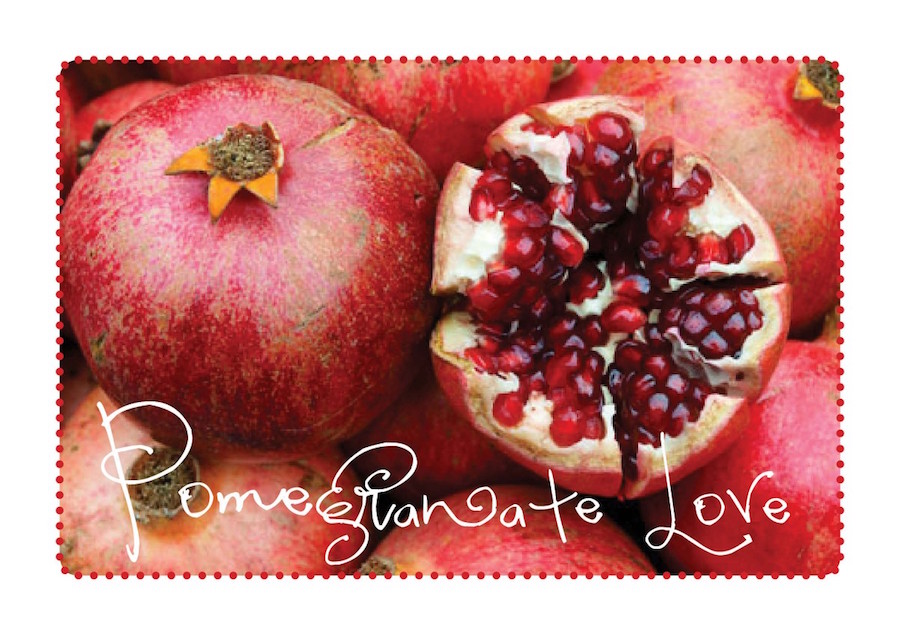

Pomegranates
are going wild!

"I am working as hard as I can!"
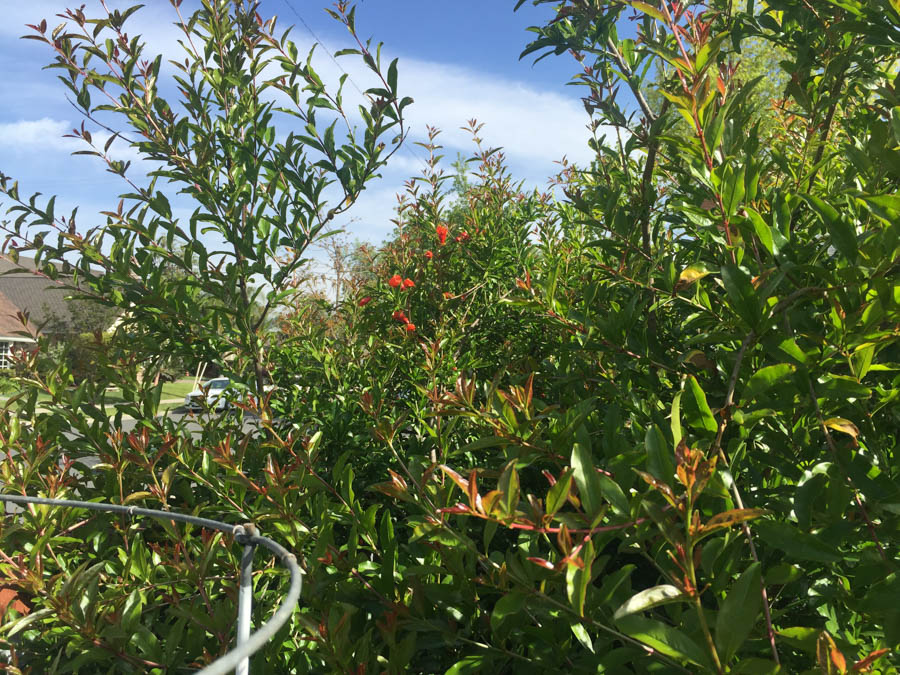
The tree as it appears from inside the year
Did You Know? - Pomegranates are a many seeded fruit about the size of a large orange, with a tough reddish-purple or reddish orange skin (There are also yellow, green and white varieties). The hundreds of small red edible seeds are surrounded by a reddish, juicy, jelly-like tangy pulp. Pomegranates are native to western Asia, but are now grown widely in Mediterranean countries, China and Japan.
Pomegranates are unique fruits, and they have no close relatives. There is disagreement among taxonomists as to what family they belong to, and they are frequently placed in an order of their own, Granateae.
Ancient Egyptians used the pomegranate in a variety of ways. The juice (called Schedou) was believed to fight intestinal worms, while the pomegranate blossom was crushed to make a red dye and the peel was used for dyeing leather. The pomegranate became so revered that representations of pomegranates were found on Egyptian wall paintings in tombs, symbolizing life after death. In fact, King Tut took a pomegranate vase into the afterlife with him.
Muhammad, the prophet whose visions laid the foundation of Islam, considered the pomegranate to be a precious fruit filled with nutrition, bringing both emotional and physical peace. Legend has it that each pomegranate contains one aril descended directly from paradise.

Vicky's point of view.. Sneak peek over the front fence

Oranges everywhere... We have six orange trees and lots of orange juice

I will be an orange in about six months!

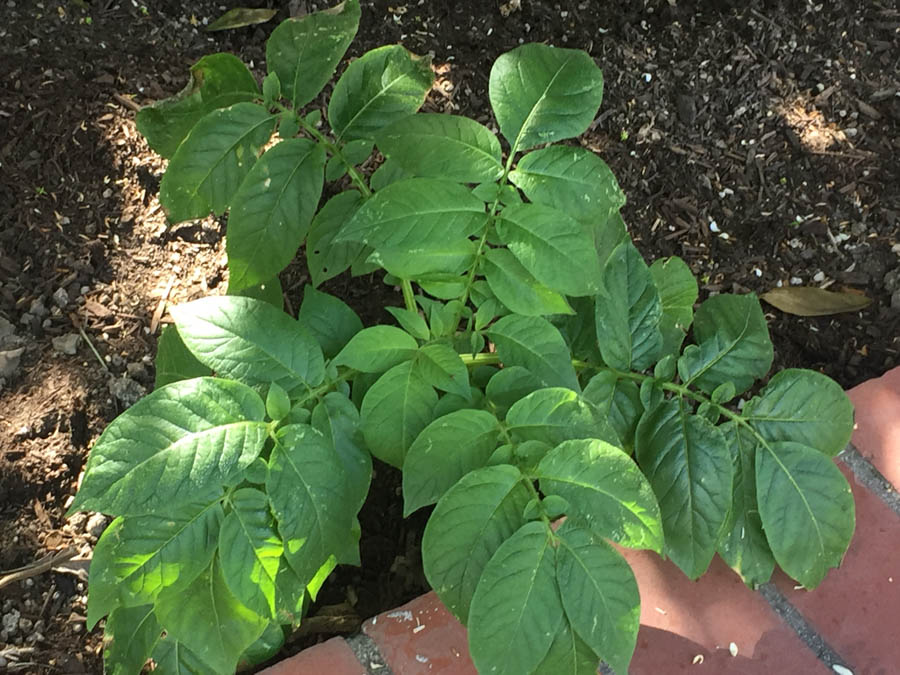
I am a potato
... When the green leave turn brown it is time to dig for the potato
Did You Know? - The average American eats approximately 126 pounds of potatoes each year.
The potato is a relative of tobacco and the tomato.
Potatoes require less water to grow than other staple foods such as wheat, rice and corn.
Up until the late 18th century, the French believed that potatoes caused leprosy.
The potato is the fourth most important crop in the world after wheat, rice and corn.
Marie Antoinette wife of Louis XV was known to wear potato blossoms as a hair decoration.
The potato, which originated in Peru, took a long journey to reach North America. The Spaniards took it back to Spain in the 16th century; from there it made its way to Italy and northern Europe, then to Bermuda and the Virginia colonies of North America.

 Tomatoes everywhere... Each one is different
Tomatoes everywhere... Each one is different
 More Swiss chard?
Yes and behind it are tomatoes and artichokes!
More Swiss chard?
Yes and behind it are tomatoes and artichokes!
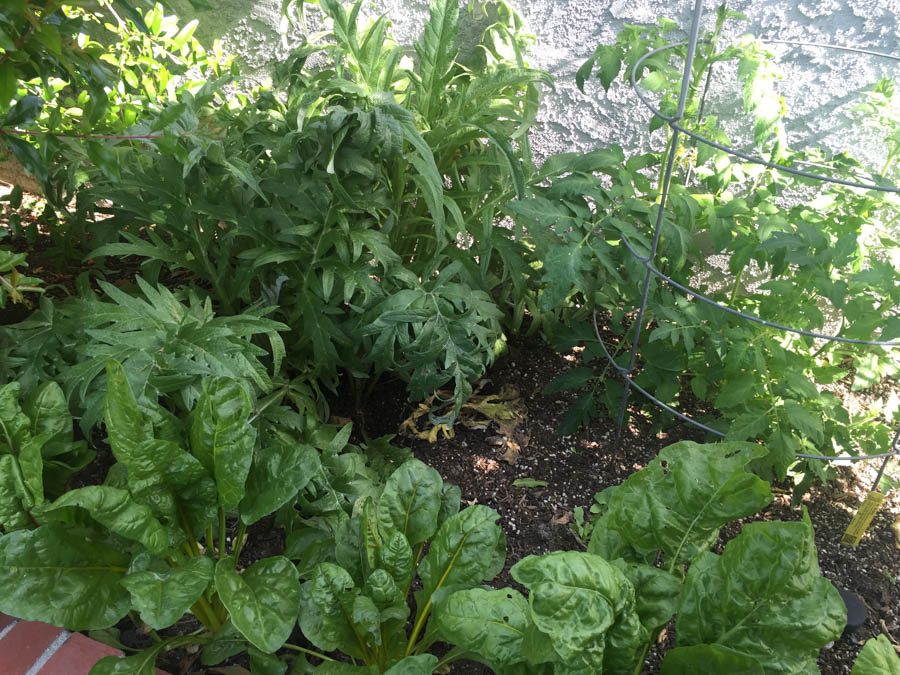
The Fountain Plant
(Artichoke) will provide 8-10 excellent artichokes for us

Tomatoes hidden away but still get sufficient sunlight

We are string beans...
These came up from volunteers!
 Japanese grapes....
We get bunches of large seeded grapes with wonderful flavor
Japanese grapes....
We get bunches of large seeded grapes with wonderful flavor
Did You Know? - While the seeds are bitter and the skin is not traditionally eaten, the flesh is juicy with high sugar content and mild acidity. Kyoho grapes were first produced in 1937 in Shizuoka Prefecture, but were not so named until 1946. They are popular in Japan, China, and Korea for their size and very sweet flesh.

The grapes are already forming

We have ONE flower in the garden.... It is called a "Miss Charlotte"
 Orange juice on the tree... Twenty oranges produce a quart of orange juice
Orange juice on the tree... Twenty oranges produce a quart of orange juice
We get 15+ quarts a season form one tree!

Blue berries in the front yard!

The little oranges are forming now
